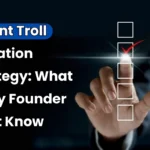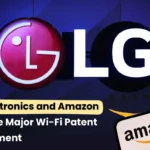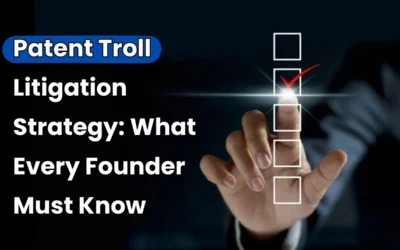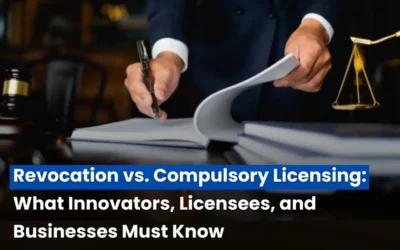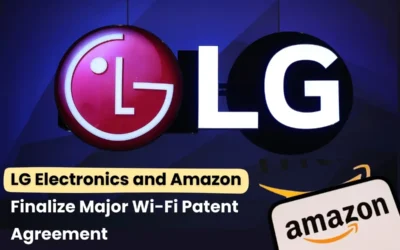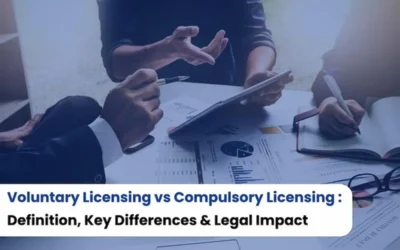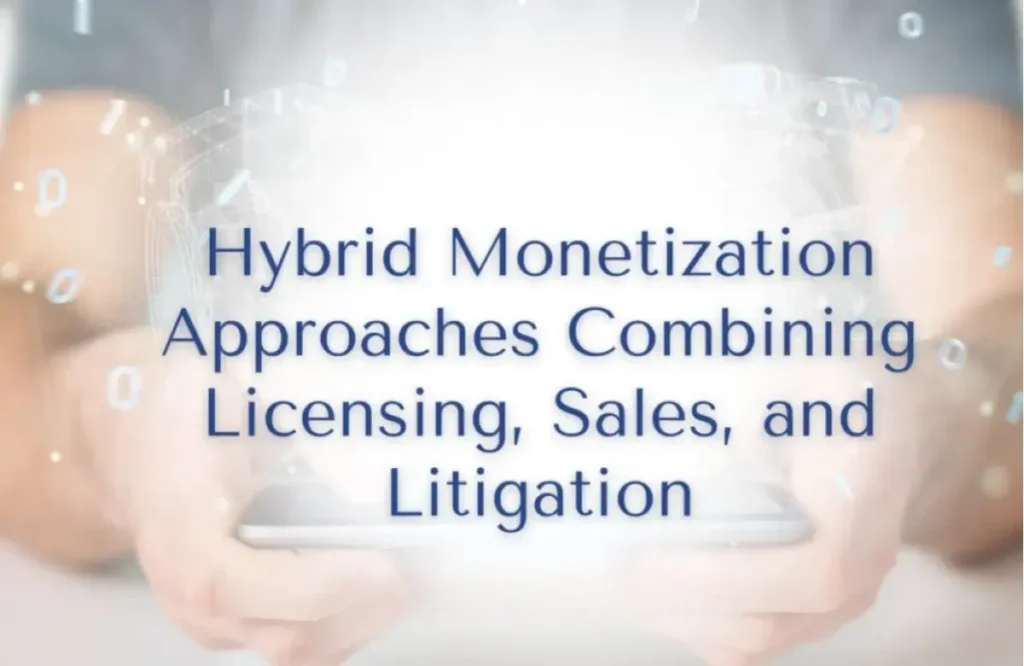
The modern intellectual property asset environment is changing very quickly, with patents no longer being defense hedges but also cash cows in financial terms. However, depending on one form of patent monetization by either patent licensing or patent sale may only limit the maximum possible potential of a patent portfolio. In order to build patent value and diversify revenue, growing numbers of patent owners are leveraging a Hybrid monetization strategies incorporating patent licensing, patent selling, and patent litigation. The multifaceted strategy allows patent owners to maximize revenue and protect patent rights from patent infringement.
Understanding the Three Pillars of Hybrid monetization strategies
1. Patent Licensing
Patent licensing is the giving of a third party a right to use a patented invention in return for a patent royalty payment or a lump sum. It is predominantly preferred because it gives a consistent flow of income without the patent owner needing to manufacture or sell the product.
Types of Licensing Agreements:
- Exclusive Licensing: Grants an exclusive right to one party.
- Non-Exclusive Licensing: Allows more than one party to license the same patent.
- Sublicensing: Permits sublicense to third parties by licensees.
Benefits:
- Stable Royalty Income: Offers stable revenue in the form of royalty-based licensing agreements.
- Market Penetration: Stimulates use of patented technology in other markets.
- Strategic Partnerships: Promotes partnerships between industry players and patent holders.
Read Also: Why patent monetization platforms matter for company growth in India?
2. Patent Sales
Patent sales are the outright sale of ownership of patents for a cash payment. Firms shed non-core patents or low-value licensing patents.
When to Consider Patent Sales:
- When there is an immediate requirement for cash flow.
- When the cost of patent maintenance is disproportionate.
- When patent maintenance contradicts business policy.
Benefits:
- Recommended Liquidity: Converts patents to cash.
- Cost Saving: Avoids long-term patent maintenance fees.
- Core Patents Effectiveness: Used maintenance resources on more worthy patents of the patent portfolio.
3. Patent Litigation
Patent litigation is enforcing the rights of the patent owner through filing suit for patent infringement. It is typically used if other options such as patent licensing fail.
Key Litigation Outcomes:
- Patent Settlements: Settlement in court leading to agreement.
- Court-Awarded Damages: Courts awarding compensation against infringement.
- Injunctions: Court orders preventing future unauthorized use.
Benefits:
- Patent Rights Protection: Protection against unauthorized use.
- High-Value Results: Litigation yields high-value results.
- Deterrence: Sends a strong message to others who would otherwise consider encroaching.
The Power of Combining Licensing, Sales, and Litigation
An integrated monetization strategy has the best of each technique to maximize a patent. This aggressive strategy allows patent owners to:
- Start with Licensing: Look for those firms that possess royalty-paying license agreements to build patent royalties without problems. Licensing is generally the most desirable option because it is a win-win arrangement between the licensor and the patent holder. The strategy can produce steady streams of royalties over the term of the patent that create long-term cash flows.
- Sell Non-Core Patents: Sell non-core patents in order to realize lump-sum proceeds and reduce patent maintenance costs. Companies hold on to non-strategic patents. Patent sales of this type provide companies with cash in hand immediately and the possibility to invest in more strategic innovation.
- Enforce Rights by Litigation: Establish patent litigation in case a patent is violated or being violated licensing negotiations result in patent settlements or coercive licensing. Litigation could be employed if all other steps do not work. Patent litigation is expensive, but victory resolves high-value settlement and further increases the market power of the patent owner.
Real-World Applications
- Qualcomm: Qualcomm is the leader in patent litigation and patent licensing. Qualcomm receives royalty streams and protects its intellectual property assets vigorously. Qualcomm’s approach is an evidence of the effectiveness of the combination of licensing and litigation in protecting its patent rights as well as preventing exploitation.
- Nokia: Aims to sell patent transactions to shed off non-core patents and keep an income-generating licensing portfolio. Nokia strategy is an exhibition of how discarding unused patents can fund litigation and licensing. Nokia has managed to balance selling patents with royalty-bearing license transactions in order to achieve diversified revenues.
Read Also: Why patent monetization platforms matter for company growth in India?
Key Benefits of Hybrid Monetization
- Revenue Diversification: Merges patent royalties, upfront lump sum purchases, and lawsuit settlements to eliminate any individual source of income.
- Risk Reduction: Reduces reliance on a single source of income, leading to diversified incomes and protection from the vagaries of the market.
- Portfolio Optimization: Invests in high-value patents and divests or asserts low-value patents to optimize patent portfolio value.
- Market Leverage: Threat of litigation can cause a preference for licensing, allowing patent owners to negotiate better and discouraging patent infringement.
Challenges and Considerations
- Legal Fees: Patent lawsuits are very costly, especially for small businesses. Lawyer fees, court fees, and expert witness fees can quickly accumulate.
- Value Barrier of Complexity: Value of patent portfolio must be properly valued in settlement litigation, sales, and settlement licensing agreement pricing. Proper valuation must be done to fairly compensate patent owners.
- Market Readiness: Demand of certain patents is industry-specific; timing of selling the patent or licensing agreement must be such as to realize optimal returns.
- Reputation Risks: Excessive reliance on patent litigation can undermine industry reputation by portraying patent owners as “patent trolls.” A balance between enforcement and collaborative licensing has to be achieved.
It is an optimal way of optimizing patent value to classify patent licensing, patent selling, and patent litigation under a hybrid monetization strategy. Not only does the strategy promise diversified cash flows, but also intellectual property asset value maximized and promise of rights of the patent owner. Such a strategy enables the patent owners to open new horizons, reduce risk, and optimize overall patent portfolio performance.
